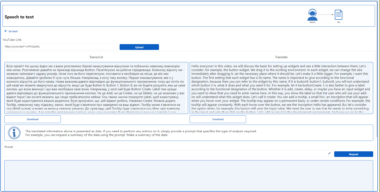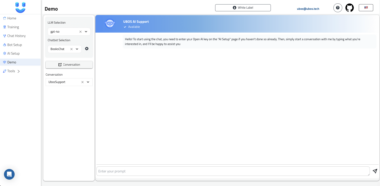MCP Server Sample
This repository contains an implementation of a Model Context Protocol (MCP) server for educational purposes. This code demonstrates how to build a functional MCP server that can integrate with various LLM clients.

MCP Server Example
This repository contains an implementation of a Model Context Protocol (MCP) server for educational purposes. This code demonstrates how to build a functional MCP server that can integrate with various LLM clients.
References:
- Model Context Protocol - Anthropic.
- MCP - Python.
What is MCP?
MCP (Model Context Protocol) is an open protocol that standardizes how applications provide context to LLMs. Think of MCP like a USB-C port for AI applications - it provides a standardized way to connect AI models to different data sources and tools.
Key Benefits
- A growing list of pre-built integrations that your LLM can directly plug into
- Flexibility to switch between LLM providers and vendors
- Best practices for securing your data within your infrastructure
Architecture Overview
MCP follows a client-server architecture where a host application can connect to multiple servers:
- MCP Hosts: Programs like Claude Desktop, IDEs, or AI tools that want to access data through MCP
- MCP Clients: Protocol clients that maintain 1:1 connections with servers
- MCP Servers: Lightweight programs that expose specific capabilities through the standardized Model Context Protocol
- Data Sources: Both local (files, databases) and remote services (APIs) that MCP servers can access
Core MCP Concepts
MCP servers can provide three main types of capabilities:
- Resources: File-like data that can be read by clients (like API responses or file contents)
- Tools: Functions that can be called by the LLM (with user approval)
- Prompts: Pre-written templates that help users accomplish specific tasks
System Requirements
- Python 3.10 or higher
- MCP SDK 1.2.0 or higher
uvpackage manager
Installation
Adding MCP to your python project We recommend using uv to manage your Python projects.
If you haven’t created a uv-managed project yet, create one:
uv init mcp-server-sample
cd mcp-server-sample
Then add MCP to your project dependencies:
uv add "mcp[cli]
Alternatively, for projects using pip for dependencies:
pip install "mcp[cli]"
Running the standalone MCP development tools To run the mcp command with uv:
uv run mcp
Quickstart
Let’s create a simple MCP server that exposes a calculator tool and some data:
# server.py
from mcp.server.fastmcp import FastMCP
# Create an MCP server
mcp = FastMCP("Demo")
# Add an addition tool
@mcp.tool()
def add(a: int, b: int) -> int:
"""Add two numbers"""
return a + b
# Add a dynamic greeting resource
@mcp.resource("greeting://{name}")
def get_greeting(name: str) -> str:
"""Get a personalized greeting"""
return f"Hello, {name}!"
You can install this server in Claude Desktop and interact with it right away by running:
mcp install server.py
Alternatively, you can test it with the MCP Inspector:
mcp dev server.py
Made with 
License
This project is licensed under the MIT License. See the LICENSE file for details.
MCP Server Sample
Project Details
- antonioscapellato/mcp-server-sample
- MIT License
- Last Updated: 5/7/2025
Recomended MCP Servers
Web Search tools are a series of tools that allow Claude to acces de internet via MCP Server

This is a Chain-of-Recursive-Thoughts (CORT) MCP server.
MCP Server for Aviation LLM interactions

Model Context Protocol (MCP) server to access an instance of TrueRAG

rss3 + mcp server =

An MCP (Model Context Protocol) server for performing accessibility audits on webpages using axe-core. Use the results in...

just-prompt is an MCP server that provides a unified interface to top LLM providers (OpenAI, Anthropic, Google Gemini,...
MCP server that provides access to Chinese stock market data using akshare-one

 From vibe coding to vibe deployment. UBOS MCP turns ideas into infra with one message.
From vibe coding to vibe deployment. UBOS MCP turns ideas into infra with one message.







